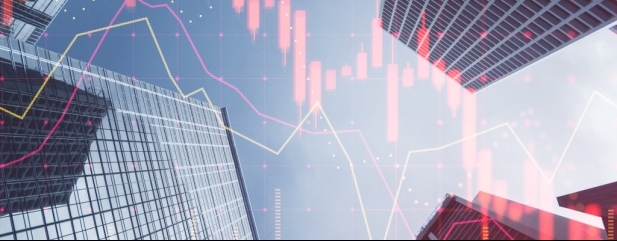Archived article
Please note that tax, investment, pension and ISA rules can change and the information and any views contained in this article may now be inaccurate.
After banking crisis and tech rally what is next for markets in 2023?

As quarters go, the first three months of 2023 have been ‘interesting’ to put it mildly.
Having been shunned at the end of last year due to worries over valuation and rising interest rates – which reduce the value of future free cash flows – technology stocks have roared back in 2023 with the US Nasdaq Composite index gaining almost 20% after its best March since 2010.
Strength in US tech has helped compensate for weakness in banks – the KBW Bank Index is down 20% this year – and has led to the first case in 20 years of the MSCI World Index going up despite a 10% drop in financials according to Graham Secker and the strategy team at Morgan Stanley (MS:NYSE).
Tech bulls like Dan Ives of US broker Wedbush argue the sector can continue to push higher on consumer demand (Ives believes Apple (AAPL:NASDAQ) will get back to a $3 trillion valuation or 20% more than its market value today).
Yet the quarter was an anomaly, driven by a weak US dollar, positive economic surprises (the data wasn’t as bad as feared) and stable earnings forecasts, which could be about to change
says Secker.
‘We expect markets to come under pressure as and when economic and earnings trends start to weaken. While this is not happening yet, history suggests that tighter credit conditions and lending standards will drag on both economic and profit growth going forward.’
Credit conditions had tightened considerably in both the US and Europe well before last month’s turbulence in the financial sector, and it’s far from clear US banks are out of the woods yet.
Unnerved by bank failures and in search of better returns, US depositors are pulling their savings out and piling into money-market funds, Treasury bonds and cash ETFs at the fastest rate since the pandemic.
In the first quarter, investors diverted over $500 billion of deposits into cash funds, with the trickle turning into a flood in the last fortnight, according to data from EPFR Global.
Banks have been slow to raise rates on savings but hiking them now would crush their profit margins and damage their share prices.
Yet the interest rate cycle isn’t over, and while central banks are concerned about financial stability they have a bigger priority which is fighting inflation.
Core inflation, which excludes volatile items such as food and energy, is running at 4.6% in the US and 5.7% in Europe – including food prices, which have proved much harder to rein in, the rate is much higher, meaning more rate rises are coming.
And the spike in oil prices after a surprise output cut by producers’ cartel OPEC at the beginning of April will only add to inflationary pressures.
Important information:
These articles are provided by Shares magazine which is published by AJ Bell Media, a part of AJ Bell. Shares is not written by AJ Bell.
Shares is provided for your general information and use and is not a personal recommendation to invest. It is not intended to be relied upon by you in making or not making any investment decisions. The investments referred to in these articles will not be suitable for all investors. If in doubt please seek appropriate independent financial advice.
Investors acting on the information in these articles do so at their own risk and AJ Bell Media and its staff do not accept liability for losses suffered by investors as a result of their investment decisions.
Issue contents
Feature
Great Ideas
Investment Trusts
News
- Petrofac shares surge 70% after €13 billion offshore wind contract
- Burford makes 65% gains on positive US court decision in YPF case
- NCC is down 40% as it battles a cybersecurity demand slowdown
- Discover why EasyJet shares are up 57% since the start of 2023
- After banking crisis and tech rally what is next for markets in 2023?
 magazine
magazine








